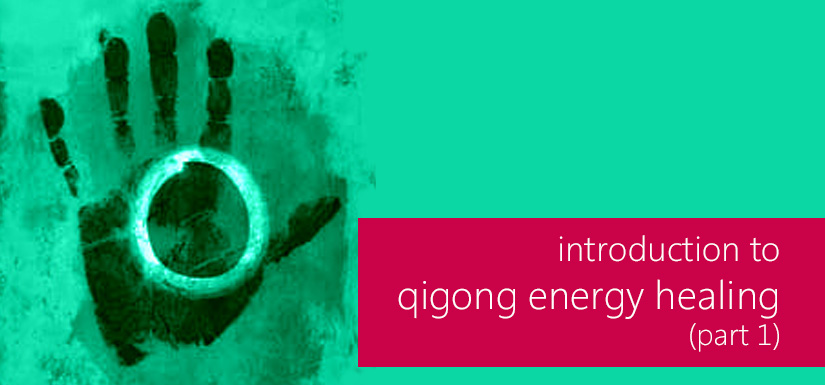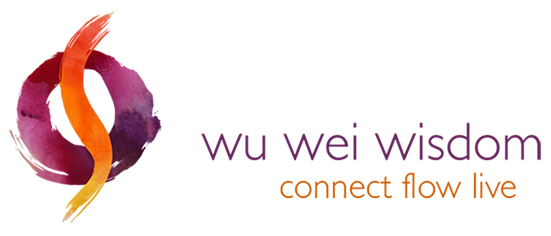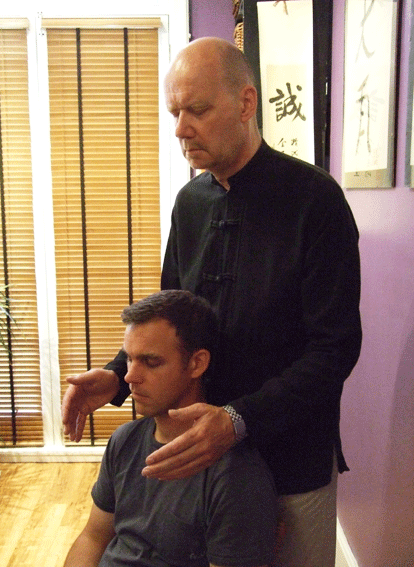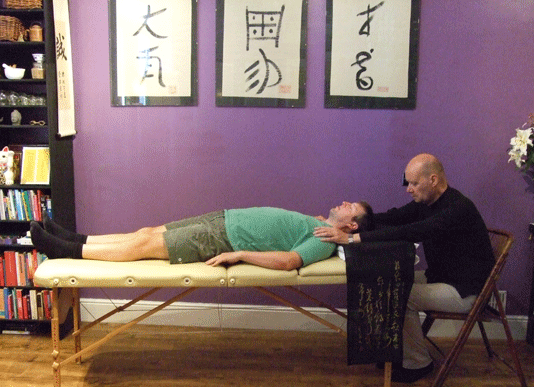introduction to qigong energy healing (1/3)

summary
This is the first in a series of articles sharing my understanding and experience of Qigong healing, also known as ‘Medical Qigong’, one of the lesser-known areas of traditional Chinese medicine.
In this introductory piece I review the basis for all Qigong healing, namely the treatment of the ‘whole’ and the nature and flow of Qi, and set out my journey of discovery of this profound therapy.
essential teaching notes
Treating the whole and understanding Qi
The existence and practice of Qigong healing emphasises one of the key principles that separate Western and Chinese medicine, namely, the treatment of the whole, rather than focusing on specific health areas or disciplines. Chinese philosophy and medicine view physical, mental, and spiritual energetic health holistically, and consider that illness results from imbalances, stagnations or blockages within the whole person, which disrupt the flow of our ‘life force’ or ‘energy’ known as Qi.
Working with a client to identify blockages and rebalance their Qi can be one of the most profound and rewarding experiences for a Chinese medicine practitioner. Qi is such an interesting, subtle, diverse, and powerful energy, which can be influenced from many sources and, from my experience and understanding, Qigong healing is an important aid to addressing and reinforcing the harmonious flow of Qi through one’s body and life, promoting general health, wellbeing and self-worth.
Qi can be thought of as the Universal force that flows through everything and everybody in a state of transformation, change and flux, almost like the driving force or energy of the Tao harmoniously finding a balance with nature. In the same way as we experience gravity, which cannot be seen but can be felt and understood, Qi forms a vital part of our life on this earth.
All elements of Chinese medicine, including acupuncture, Chinese herbal medicine, healing, meditation, tai chi, massage and Qigong, have the concept of balancing the flow of Qi at their foundation.
The West has no word or words to fully describe this ‘force’ so it normally gets described as ‘energy’ and, although this gives you some indication of its dynamic, it does not cover the all-encompassing and profound power that balanced, harmoniously flowing Qi can achieve.
From a Western linear thinking mind Qi is something of an enigma – it is very challenging to talk about and discuss, yet is something that we have all felt at some time in our life, perhaps without even realising it or giving it that name.
The Chinese make no consensual distinction between matter and energy, so this makes translations such as ‘vital energy’ or ‘spiritual energy’ problematic, although some of these terms can help in the visualisation of Qi. In Ted Kaptchuk’s famous Chinese medicine text book ‘The Web That Has No Weaver’, he states: “we can perhaps think of Qi as matter on the verge of becoming energy, or energy materialising” [*1].
The traditional Chinese form of writing Qi is 氣, which literally means “steam (气) rising from rice (米) as it cooks” and the earliest way of writing Qi consisted of three wavy lines which represented breath seen on a cold day. The literal Chinese translation of Qi is ‘air’, ‘breath’, or ‘gas’, which sometimes causes misunderstandings as it could lead one to believe that Qi is only those things, or that Qigong (Gong meaning to cultivate) is only a breathing exercise.
This could not be farther from the truth, and this lack of adequate translation into the English language can sometimes be an initial stumbling block to understanding the process and power of Qi and Qigong healing.
If we consider that human health and vitality is determined by the relative condition and flow of the Qi fields that surround you and emanate from and within your body, the translation of ‘healing’ in the term ‘Qigong healing’, can be thought of as encouraging this flow of Qi through the dissolving and transforming blockages and stagnations that inhibit the body’s natural healing process.
Qigong healing can feel and sound counter-intuitive to our Western minds, and one of my personal mantras that helps me harmonise this is: “we came from source, we return to source, we are source”. When we take time to pause with our clients and consider that we are connecting on many levels, both seen and unseen, we also connecting to the Universal force of Qi, and that connection can be mysterious, exhilarating and healing (perhaps an explanation for this feeling could be found in the Western words of ‘intuition’ or ‘gut feeling’).
In some ways Qi and Qigong healing go beyond simple language translation and should be experienced and felt personally through practice and self-development, and this is something I always encourage my students to consider.
My first encounters of Qigong healing China
On my first visit to China I was fortunate to be interned at a large general hospital in the suburbs of Beijing, during the first few weeks of my placement I was fascinated by the practice and administration of acupuncture in so many diverse diseases and health issues, increasing my knowledge and understanding on the practice far beyond my Western training.
During those initial weeks of induction to the new culture of the hospital and their alternative approach to illness and treating people, I became aware of a group of ‘independent’ doctors, who I later found out to be ‘Qigong doctors’, working through the wards of the hospital, administrating healing to patients that had received both Chinese and Western medical treatments.
The procedure at this specific hospital (although this differs throughout China) was as follows: the Qi Gong doctors appeared on the ward and patients would raise their hand or make it known that they wanted to participate in the healing process. I was amazed at the interest and excitement the arrival of the Qigong doctors generated, even relatives of people that were incapacitated would tie red ribbons to the end of their bed as a show of consent for healing.
Three or four doctors would then surround the bed and, without touching the patient, would adopt a Qigong ‘Wuji’ stance and began a protocol of Qigong healing that would last from 10 to 20 minutes per patient.
Although I was aware of this healing during the early stages of my interment, it was not until I had the opportunity to check several patients pulses before and after they had received healing from the Qigong doctors, that I was amazed at the profound difference it had made, and I became intrigued about what was actually happening during the healing process.
Later a return visit to the same hospital was organised and I suggested that a week of that visit could be spent ‘shadowing’ the Qigong doctors. Although the medics were initially surprised that a Western TCM practitioner would be interested in Qigong healing, they were extremely hospitable, gracious and readily agreed to my request.
On my return visit some months later I was able to spend one week shadowing the Qigong doctors during their work – a normal day would start with an hour of personal Qigong meditation practice before reporting to the head consulting doctor for a briefing session. I was always surprised at the breadth and depth of the monitoring of patients from the previous day’s Qigong healing treatments, and how this information and the patient’s energetic health was treated respectfully and with great seriousness.
We would then set off on our ward rounds, and although I had some knowledge of energetic healing through earlier training as a Reiki Master the UK, I was not prepared for the profoundness of the experiences I encountered during that week with some of the most intuitive, loving, healing professionals that I have ever encountered.
After a few days, once I had gained the trust of the Qigong doctors, they allowed me to stand in the Qi Gong healing circle as the healing was being performed on patients. It is very difficult to write about my experiences as this would be anecdotal, but I will try and explain some of the situations I personally encountered because it was very inspiring to see Western and Chinese medicine co-operating on a range of illnesses and diseases.
The underlying impression I received was of the benefits to the patients, either by speeding recovery times significantly, or by improving their quality of life throughout the illness and reducing their pain levels by releasing the body’s own healing properties.
Protocol was that when the doctors were standing either side of the patient’s bed, after few moments of meditation a vibrational feeling began to grow, sometimes with heat, sometimes without. The procedure was that you would allow your hands to follow this ‘feeling’ (which I know, from my previous Qigong practice to be Qi). For the first few minutes your hands would be led around the patient until you were drawn to an area where you felt that you had to pause and hold your position.
The feeling would then generally increase again, sometimes with or without heat, followed by what I can only describe as the profound sense of peace, tranquility and healing. The atmosphere around the patient would change and the patient would normally drift off into a deeper zone of relaxation and breathing. At this point we were encouraged to “trust” the Qi and the unseen work that was taking place, this procedure was extremely flexible and you instinctively knew when it was time to bring the healing session to a loving close.
One thing I did observe to be unusual was that your hands were not always drawn to the area that would seem obvious from the illness been suffered, in fact some of the most profound changes I noticed in the pulse diagnosis were when healing had taken place on what was a seemingly unconnected area of the body.
In subsequent visits to China I developed my training and understanding of Qigong healing under the tutelage of Master Wan Su Jain at the Chinese Taoist Medical Qigong Bagua Xundao Gong Headquarters in Beijing, and I worked alongside him doing some very interesting healing work with patients suffering from physical and mental disabilities, understanding how energy medicine can be helpful reaching blockages that other forms of medical treatments have difficulty reaching.
Master Wan’s philosophy was that, although a disability may be profound, every human being has a connection to the life force of Qi, so some healing will always take place, even if is simply restoring a sense of calm and peace in an otherwise challenging and often difficult life. Again my observations of this work can only be anecdotal, but I did see and feel a deep change in the patient’s demeanour and pulses after each Qigong healing session.
The value of Qigong healing in my practice
Today I practice Qigong healing on a daily basis as part of my treatment of clients, and through my Qigong classes and workshops at my clinic and teaching centre, Peak House Practice in Derbyshire, England.
I have found the practice of Qigong healing an invaluable tool for treating and balancing the physical and emotional health of patients, and I find great value in using Qigong healing alongside acupuncture as the combination can be very powerful, almost as if the needle prescription of acupuncture is treating the blockage or stagnation on one level, and the Qigong healing is working on a deeper more personal and profound level.
Although most of my patients have never heard or experienced Qigong healing, nearly all comment on the vibrational feeling and the deep sense of calm and relaxation that they have experienced. For instance, this morning my first client arrived in a frenzied emotional state (agitated Qi), with completely different symptoms to what she had originally made the appointment for (painful knees). So we spent a few moments talking through her worries and anxieties before treatment began, attempting to return her to a more balanced, harmonious state, before continuing with the original physical treatment of acupuncture on her knees.
Whilst the needles were in place we did some Qigong healing and she drifted off into a peaceful, restful sleep state. In this state Qi has a better opportunity to flow, clear blockages and stagnations and heal the whole authentic body, and after the treatment she reported a complete reversal to how she felt 45 minutes earlier. Although anecdotal, I see similar profound types of effect of Qigong healing in my practice every day.
In part 2 of this series I review the practical steps to be taken in preparing for Qigong healing and techniques of healing diagnosis.
*1: Kaptchuk, T.J. The Web That Has No Weaver (Contemporary Books Inc., Revised edition Feb. 2000)
This series of articles on Qigong healing is also published in International IMOS Journal.
want more support
Discover how David can help you rebalance your health and wellbeing with his one-to-one sessions.
You can also:
- join our free Wu Wei Wisdom Facebook Group where you’ll find lots more guidance and discussion
- sign up for our free weekly email newsletter with all our latest teachings and news.
If you have any questions or would like more information on our work please contact us – we’re always happy to help.
like this post?
Please share it! This helps to pass on the positive Qi of our work to others who may benefit…


